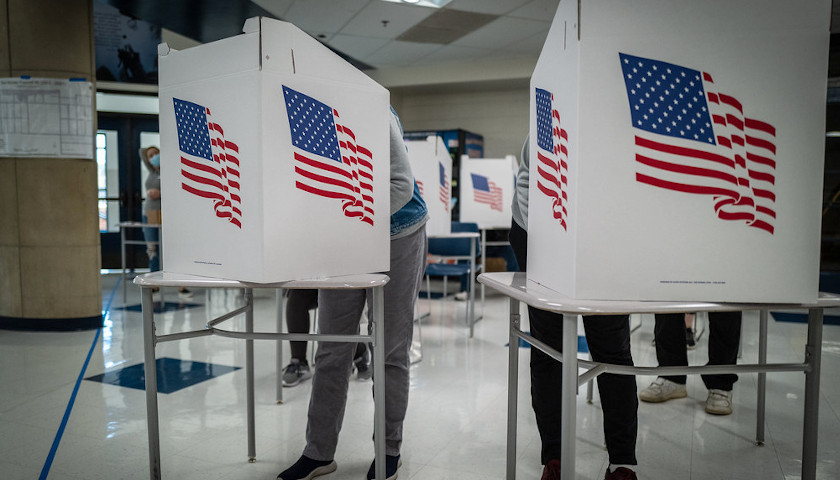Thursday, the Supreme Court of the United States (SCOTUS) upheld Arizona law prohibiting ballot harvesting and out-of-precinct voting. The three dissents in the case, Brnovich v. Democratic National Committee (DNC), came from Justices Elena Kagan, Stephen Breyer, and Sonia Sotomayor. The DNC had argued that the state’s bans on ballot harvesting and out-of-precinct voting discriminated against minorities, thereby violating the Voting Rights Act. SCOTUS rejected that assessment.
Arizona law prohibits individuals from casting provisional ballots in person on Election Day outside of their designated precinct. It also prohibits ballot harvesting, meaning that only family and household members, caregivers, mail carriers, and election officials can handle individual’s ballots.
SCOTUS announced its ruling on Thursday morning.
“BREAKING NEWS: In a 6-3 ruling, SCOUTS upholds two Arizona voting provisions: a ban on so-called ‘ballot harvesting,’ and a policy that throws out an entire ballot if it was cast in the wrong precinct,” wrote SCOTUS’s blog. “Challengers argued that both provisions discriminate against minority voters.”
BREAKING NEWS: In 6-3 ruling, SCOTUS upholds two Arizona voting provisions: a ban on so-called "ballot harvesting," and a policy that throws out an entire ballot if it was cast in the wrong precinct. Challengers argued that both provisions discriminate against minority voters.
— SCOTUSblog (@SCOTUSblog) July 1, 2021
Justice Samuel Alito penned the majority opinion, with a concurring opinion filed by Justice Neil Gorsuch and joined by Justice Clarence Thomas. In the opening statement of the majority opinion, Alito asserted that Arizona law makes voting “very easy.”
In a dissenting opinion, Kagan accused the majority of undermining the Voting Rights Act. Her 41-page dissent included a lengthy account of American history and equal voting rights. At the very end, Kagan asserted that any policy that results in disparate outcomes when voting qualifies as discriminatory.
“The language of Section 2 is as broad as broad can be. It applies to any policy that ‘results in’ disparate voting opportunities for minority citizens,” said Kagan. “It prohibits, without any need to show bad motive, even facially neutral laws that make voting harder for members of one race than of another, given their differing life circumstances.”
Alito addressed Kagan’s opinion in the majority opinion. He said that Kagan discussed voting rules that weren’t at issue in this case, and dwells on points of law that none were disputing. Alito pointed out that the real argument Kagan made in her dissent was buried past objections to interpretation of voting rules and points of law.
Alito opined that Kagan wanted to return to the version of the Voting Rights Act that existed before clarifying amendments were added in 1982, so that any voting law could be interpreted as discriminatory.
“Only after this extended effort at misdirection is the dissent’s aim finally unveiled: to undo as much as possible in the compromise that was reached between the House and Senate when §2 was amended in 1982. Recall that the version originally passed by the House did not contain §2(b) and was thought to prohibit any voting practice that had ‘discriminatory effects,’ loosely defined. […] That is the freewheeling disparate-impact regime the dissent wants to impose on the States,” wrote Alito. “Section 2 of the Voting Rights Act provides vital protection against discriminatory voting rules, and no one suggests that discrimination in voting has been extirpated or that the threat has been eliminated. But §2 does not deprive the States of their authority to establish non-discriminatory voting rules, and that is precisely what the dissent’s radical interpretation would mean in practice.”
In light of this ruling, the Department of Justice may not see a win in its recently-filed lawsuit against the state of Georgia over its voting laws.
– – –
Corinne Murdock is a reporter at The Arizona Sun Times and the Star News Network. Follow her latest on Twitter, or email tips to [email protected].
Photo “People Voting” by Phil Roeder. CC BY 2.0.





